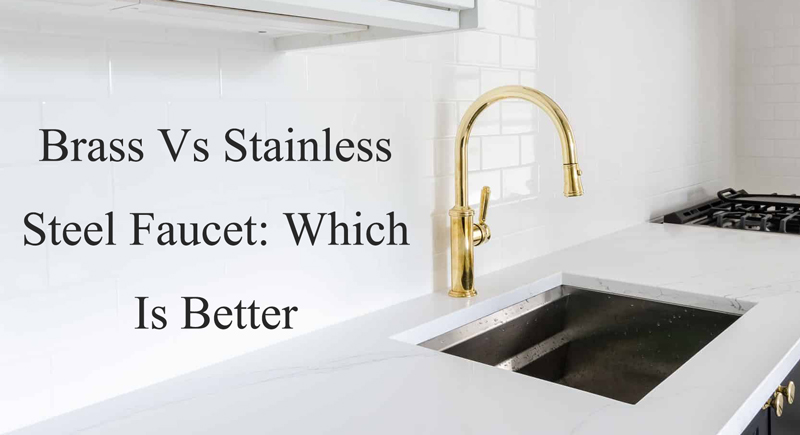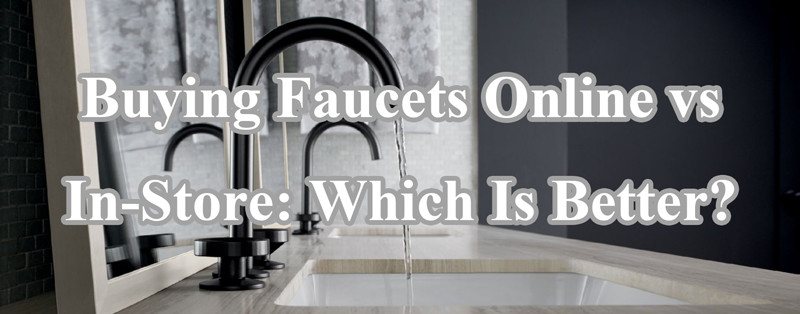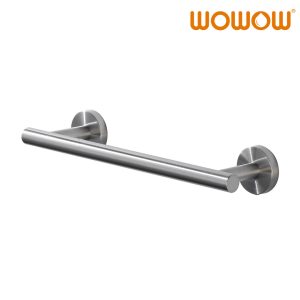
When it comes to selecting a faucet for your kitchen or bathroom, two popular choices are brass and stainless steel. Each material has its own unique characteristics, benefits, and drawbacks. In this post, we will explore the pros and cons of brass vs stainless steel faucets, as well as the key differences between them, to help you make an informed decision about which one is better suited for your needs.
Brass Faucets
Brass faucets have long been favored for their classic and elegant appearance. Brass is an alloy of copper and zinc, offering a warm, golden tone that adds a touch of luxury to any space. Here are some advantages and disadvantages of brass faucets:
Pros of Brass Faucets
Aesthetics: Brass faucets exude a timeless charm and are particularly suited for traditional or vintage-inspired designs. They can enhance the overall aesthetic of a room and create a sense of elegance.
Durability: Brass is a durable material, capable of withstanding daily use and the test of time. It is less likely to dent or scratch compared to some other materials.
Corrosion Resistance: Brass exhibits excellent resistance to corrosion, making it an ideal choice for environments with high moisture levels, such as bathrooms or kitchens. The zinc content in brass forms a protective barrier against rust.
Cons of Brass Faucets
Tarnishing: Over time, brass faucets may develop a patina or tarnish, particularly when exposed to moisture or air. This requires regular maintenance and polishing to maintain their original shine.
Cost: Brass faucets tend to be more expensive than other options, primarily due to the cost of the materials and the manufacturing process.
Stainless Steel Faucets
Stainless steel faucets have gained popularity in recent years, especially in modern and contemporary designs. Stainless steel is an alloy of iron, chromium, and other elements, such as nickel or molybdenum. Let’s explore the pros and cons of stainless steel faucets:
Pros of Stainless Steel Faucets
Modern Appearance: Stainless steel faucets offer a sleek and minimalist look, making them an excellent choice for contemporary designs. They can complement various interior styles and add a touch of sophistication.
Corrosion Resistance: Stainless steel is highly resistant to corrosion, thanks to the chromium content that forms a protective oxide layer on the surface. This makes stainless steel faucets suitable for areas with hard water or aggressive chemicals.
Easy Maintenance: Stainless steel faucets are relatively easy to clean and maintain. They do not require regular polishing or special cleaning products, making them a practical choice for busy households.
Cons of Stainless Steel Faucets
Cost: Stainless steel faucets are generally more affordable than brass faucets. However, higher-end stainless steel models may still have a higher price tag compared to some other materials.
Scratching: While stainless steel is relatively durable, it can be prone to scratches. Care must be taken to avoid using abrasive cleaners or rough materials that could mar the surface.
Differences between Brass vs Stainless Steel Faucets
Appearance: Brass faucets offer a warm and traditional look, while stainless steel faucets provide a sleek and modern aesthetic.
Durability: Both brass and stainless steel faucets are durable, but brass is generally less prone to scratching or denting than stainless steel.
Corrosion Resistance: Brass and stainless steel both offer good corrosion resistance. However, brass is more susceptible to tarnishing, while stainless steel is better at resisting stains and oxidation.
Maintenance: Brass faucets require regular polishing to maintain their shine and prevent tarnishing. Stainless steel faucets, on the other hand, are relatively low-maintenance and easy to clean.
Conclusion
In conclusion, choosing between brass and stainless steel faucets depends on your personal preferences, desired aesthetics, and maintenance requirements. Brass faucets offer a timeless appeal and are well-suited for traditional designs, while stainless steel faucets provide a modern and sleek look. Consider factors such as cost, durability, and the level of maintenance you are willing to undertake when making your decision.
 WOWOW Faucets
WOWOW Faucets









您好!Please sign in